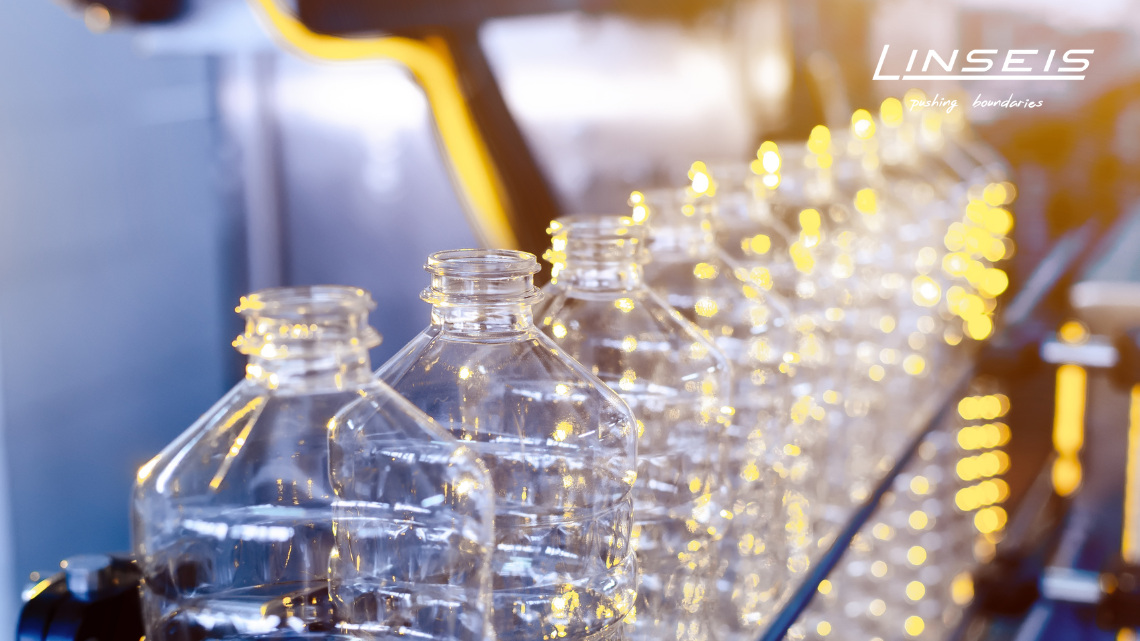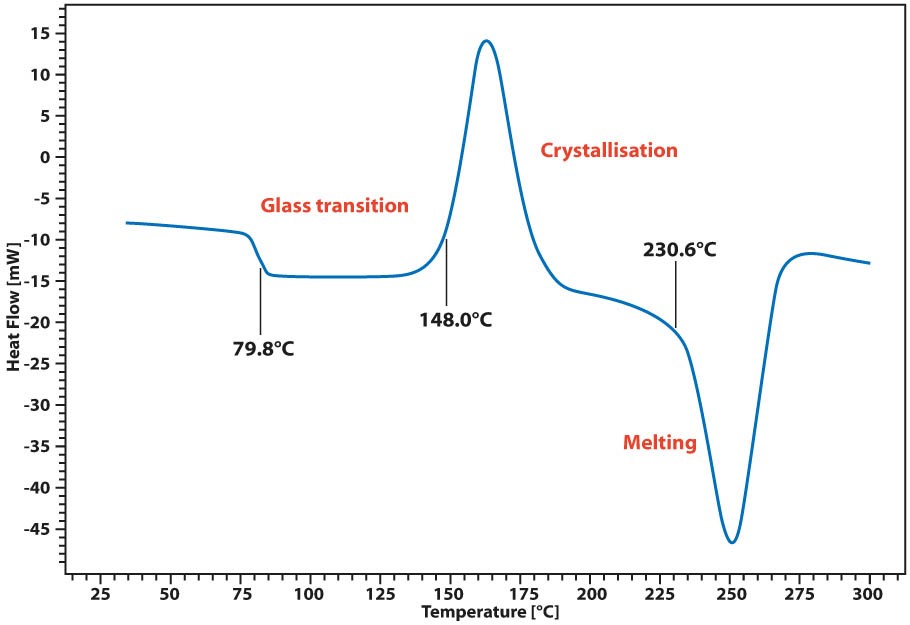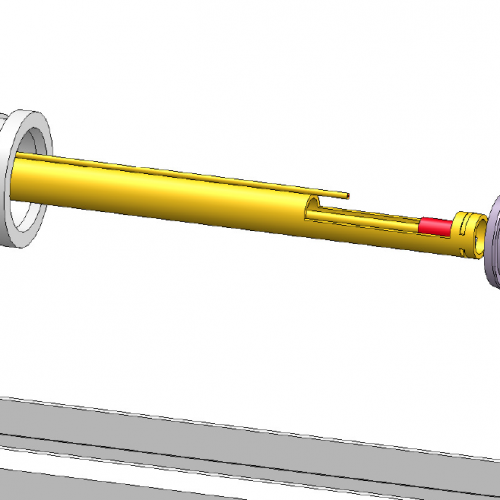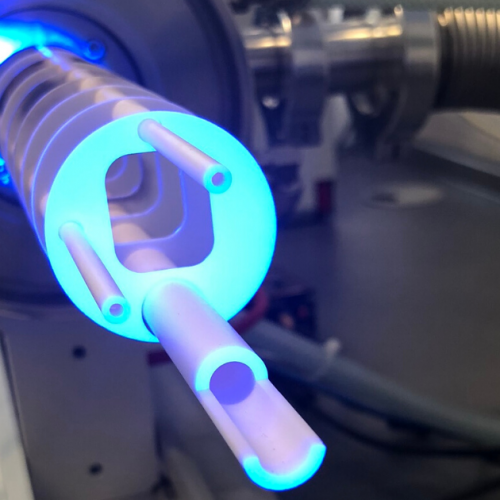Polyethyleneterephthalate (PET): An in-depth investigation

Table of Contents:
- Crystallinity of PET
- Melting Enthalpy of PET
- Diversity and Durability of PET
- Thermal Stability and Glass Transition Temperature of PET
- Various Types of PET
- Application
- Conclusion
Crystallinity of PET
Polyethylene Terephthalate (PET), commonly known as PET, holds a significant place in various industrial and commercial productions.
This thermoplastic reveals variable crystallinity, which largely determines its characteristic properties. This versatile plastic can range from a stable, solid form to a supple and flexible nature.
The flexibility in the structural composition of PET allows its use across a broad spectrum of product categories. Notably, it is used in the manufacturing of beverage bottles, leveraging the material’s inherent strength and translucent nature.
A high proportion of crystalline structures in PET provides these bottles with the necessary robustness to safely store liquids while maintaining ease of handling in everyday use. These properties are crucial for a sustainable packaging solution that meets the demands of both product integrity and consumer convenience.
Melting enthalpy of PET
The melting point of PET generally ranges between 250°C and 260°C, which is particularly utilized in the production of textile fibers.
Textiles made of PET are favored for their light weight and high tensile strength. The fine structure and durability of PET contribute to creating garments that are both breathable and long-lasting.
To determine the melting point, a Differential Scanning Calorimeter (DSC) is typically used.
For precise quantification of crystallinity and melting enthalpy, the specialized and patented Chip-DSC is employed.
Near their melting point of about 255°C, PET pellets are extruded into fibers which are then spun into yarns. Notably, although both the pellets and the resulting fibers share the same melting point, the textile fibers acquire their unique properties through the extrusion and spinning processes.
Post-spinning, these fibers gain high toughness and strength, enabling the production of durable yet lightweight textiles such as sportswear, which are both breathable and resilient to the stresses of intense physical activity.
Diversity and consistency of PET
PET excels in diversity and durability. Fine-tuning processing parameters can optimize the mechanical and optical properties of the final product.
Its versatility allows for the creation of a variety of products, from robust to flexible structures.
An example of this are PET films: They are resistant to physical stress and various environmental influences, which is why they are often used in packaging or as screen protector films.
Their resilience and longevity make them an economical solution of high quality.
Thermal stability and glass transition temperature of PET
The thermal stability of PET allows its use in numerous products. For instance, PET films maintain their shape and transparency across varying temperatures, making them an ideal choice for packaging, especially for food items.
Thanks to this temperature resistance, PET films can be used in both cool shelves and warm environments without losing clarity or shrinking. They are also chemically resistant, so they don’t react with the packaged food or cause undesirable taste or odor changes.
Because of the thermal stability, PET films are also employed in technical applications. For example, in the electronics industry, they are used as insulating materials or substrates for flexible circuits. Their ability to withstand high temperatures without deforming makes them particularly valuable for such critical applications.
In the automotive industry, PET films are used for window films due to their excellent thermal properties and UV resistance. They protect occupants from harmful UV radiation and simultaneously reduce the interior temperature, which decreases the need for air conditioning and thus optimizes fuel consumption.
Finally, PET films are also sought after in solar technology. Here, they serve as protective and cover films for photovoltaic modules, shielding the solar cells from the elements while still allowing sunlight to pass through efficiently.
The glass transition temperature of PET typically ranges between 70°C and 80°C, meaning it remains stable over a broad temperature range.
A pertinent example is PET packaging films that withstand temperature fluctuations without becoming brittle or losing their flexibility. The Chip-DSC also allows for the precise determination of the temperature at which the glass transition occurs.
Different types of PET
In terms of the various types of PET, differences in crystallinity and additives lead to products with diverse physical properties. For example:
Bottles: Often made from crystalline PET, known for its transparency and strength.
Electronic components: Amorphous PET, which is valued for its shape stability and electrical insulation properties.
Sportswear: Elastic PET, often used for breathable yet durable clothing.
Application

App. Nr. 02-011-002 Chip-DSC 10 – Polymere – PET
As an example, a PET (polyethylenetherephtalate) granulate was heated, quench cooled to freeze the amorphous state and afterwards analyzed by Chip-DSC with a linear heating rate of 50 K/min.
The resulting curve shows a significant glass transition around 80°C, followed by a cold crystallization of the amorphous parts starting around 148°C and a melting peak at 230°C.
The enthalpy of the cold crystallization peak can be used to determine the degree of crystallinity by comparison with the enthalpy of pure crystalline PET. Depending on the thermal history of the sample, the grade of crystallinity changes and therefore can be used as indicator for the history and mechanical behavior of the polymer.
Conclusion
Overall, PET demonstrates impressive diversity due to its varying crystallinity, thermal stability and specific melting and glass transition temperatures.
It is an essential building block in many sectors and it will be exciting to see the future innovations and applications of PET in the plastics world.














